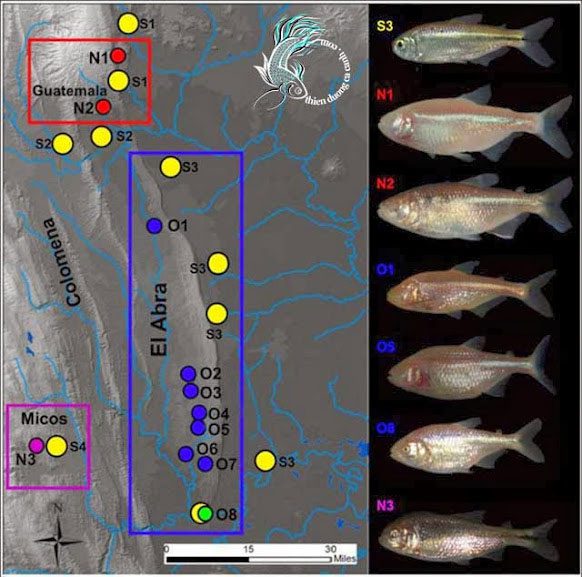For thousands of years, cave-dwelling fish have continuously evolved and adapted in a dark underground world, appearing eyeless and pale in color. Researchers at the University of Cincinnati now report that these fish possess an astonishing physiology that helps them cope with an oxygen-poor environment that can be lethal to other species.
Biologists at UC’s College of Arts and Sciences discovered that Mexican cavefish produce significantly more hemoglobin through much larger red blood cells compared to surface-dwelling fish. Hemoglobin aids the body in transporting oxygen and carbon dioxide between the fish’s cells and organs.

Blind cavefish population Astyanax mexicanus.
The study, published in Nature Journal Scientific Reports, reveals that there is still much to learn about these fascinating animals that have intrigued biologists for 200 years.
“I have been fascinated by these fish for a long time,” shared Professor Joshua Gross.
UC biologists examined the Astyanax mexicanus species, which diverged about 20,000 years ago from surface fish still found in nearby streams in the Sierra de El Abra, Mexico.
Cavefish are pale pink and almost translucent compared to the silver-colored surface fish. While cave-dwelling fish have faintly outlined eye sockets, surface fish have large, round eyes that give them a perpetually surprised expression.
“Despite many obvious physical differences, both fish are widely considered members of the same species,” Gross stated.
He added: “Unlike Charles Darwin’s finches in the Galapagos, which were separated at the species level, both cavefish and surface fish are considered members of the same species and can interbreed.”
This makes them a good model system for biologists to study evolution and genetic adaptation,” Gross shared.
Gross and his students have learned a great deal about these enigmatic fish over the years. They discovered that the skulls of cavefish are asymmetrical, which may be an adaptation for navigating in a visually barren world. They also identified the gene responsible for the fish’s ghostly pale color, which is the same gene that produces red hair in humans.
Scientists elsewhere have reported that cavefish sleep less than surface fish. For the latest study, Jessica Friedman and Tyler Boggs, biology students of Gross at UC and co-authors of the research, examined hemoglobin in the blood of the cavefish to see if it could explain how they survive in the low-oxygen environment of deep underground caves. UC’s research examined cavefish from three populations in caves in Mexico known as Chica, Tinaja, and Pachón.
While fast-moving surface currents are saturated with oxygen, cavefish live in deep caves where stagnant water remains undisturbed for long periods. Studies have found that some of these standing bodies of water have much lower dissolved oxygen levels than surface water.
Boggs noted: “They move around a lot, but they have very little access to nutrients. Blood samples showed that cavefish have more hemoglobin than surface fish. The UC researchers assumed that cavefish must have a higher hematocrit – a clinical measure of the relative contribution of red blood cells in total blood.”
The researchers expected to find more red blood cells in cavefish, “but they are almost identical,” Gross said. “We couldn’t understand what was happening.”
UC biologists examined the red blood cells of both fish species and found that the red blood cells of cavefish were significantly larger when compared.
“That size difference explains much of the hematocrit difference,” Gross stated. “We know very little about the mechanisms of cell size in evolutionary processes, so this discovery is something we can leverage to gain insight into how animals evolve to enhance hemoglobin capacity.”
Gross mentioned that increased hemoglobin could allow cavefish to forage longer in low-oxygen environments. Cavefish often have to work harder to find limited food within the cave.
Boggs stated that scientists are very interested in how fish extract oxygen from water. Due to climate change and human development, marine systems are witnessing numerous ecological disasters such as red tides and algal blooms that create low-oxygen environments often leading to mass fish deaths.
He said: “There are many ecological implications here. This is happening in freshwater and saltwater environments. Researchers are trying to draw attention to this terrible issue.”





















































